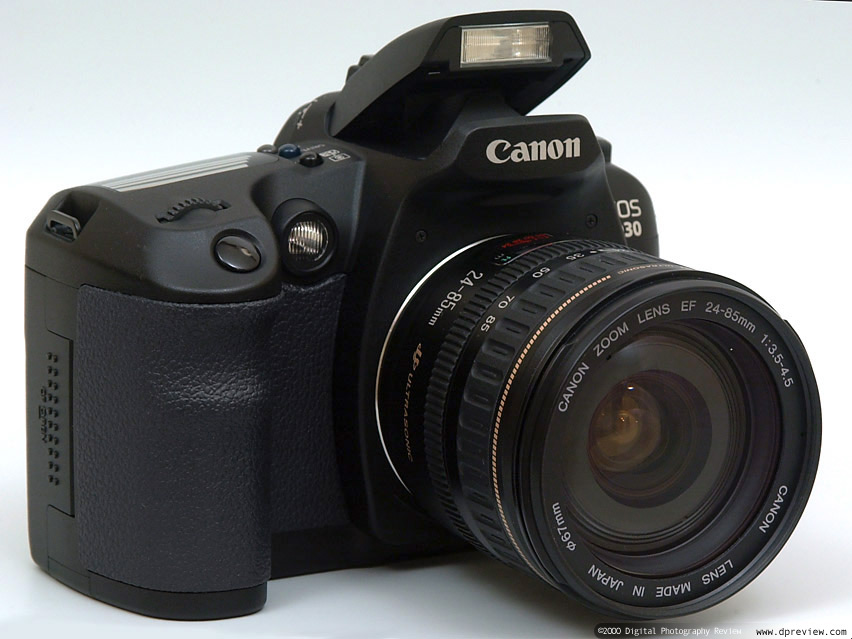
[ad_1]
 |
In the early days of digital, cameras were big, bulky, expensive and mostly out of reach for people unwilling to shell out professional-level MSRPs. Then came the Canon EOS D30, a landmark camera that introduced a slew of film photographers to digital, inspiring photojournalists to give up high-end film cameras and a new generation of wedding photographers, portraits and landscape artists to dip into the DSLR pool.
At $3000, it was not cheap, but it was within reach of a new category of camera buyer, the ‘prosumer.’
During our 25th anniversary year, we’re looking back at some of the milestones in camera history. On this day in history, on May 17, way back in the year 2000, the D30 was announced as Canon’s first built-from-the-ground-up in-house DSLR. Up to this point, Canon’s DSLRs (the EOS D2000 and EOS D6000) were joint ventures with Kodak. These cameras married Kodak internals with Canon bodies.
With the new camera, Canon was doing it all themselves, including designing a new body, its own sensors and processors and the introduction of its own RAW and JPEG engines. It would also become the first DSLR with an APS-C format CMOS sensor, a blistering 3.25MP beast capable of 3 Raw image bursts (or 9 Fine JPEG) and a full day of shooting on a single charge. It was pretty cutting-edge for the time.
The camera would arrive on store shelves in time for the holidays. In our review, dated Oct 10, 2000, we noted the monumental task that Canon had taken on. They had not only taken on building a camera on their own and decided to use a relatively new high-resolution CMOS sensor at a time when CMOS struggled with high megapixel builds, but they also had to know consumers would be comparing their camera to the previously announced, although not yet released, Nikon D1.
But Canon had pulled it off, and we were impressed, writing: “Canon’s engineers, designers and developers haven’t let them down, the D30 WILL go down in history books as a very important camera, breaking a price barrier and opening up the digital SLR market (more so than Fujifilm’s S1 Pro) to a new wave of users, both new and old. From the minute you pick up the D30 … you get a feeling of quality you weren’t expecting.”
Revisit our Canon EOS D30 review
[ad_2]